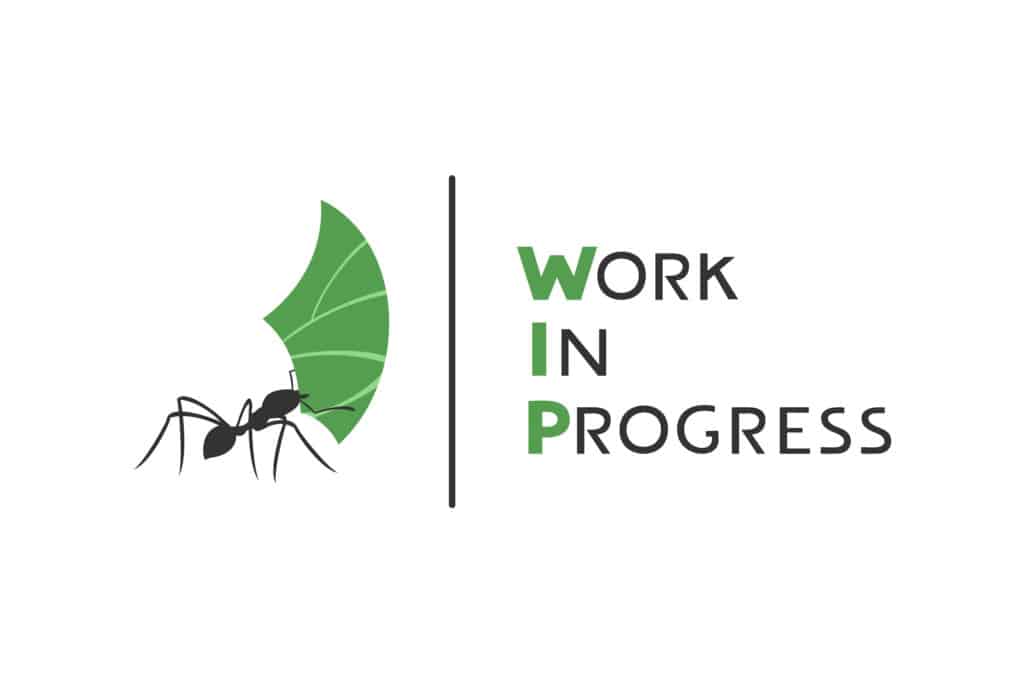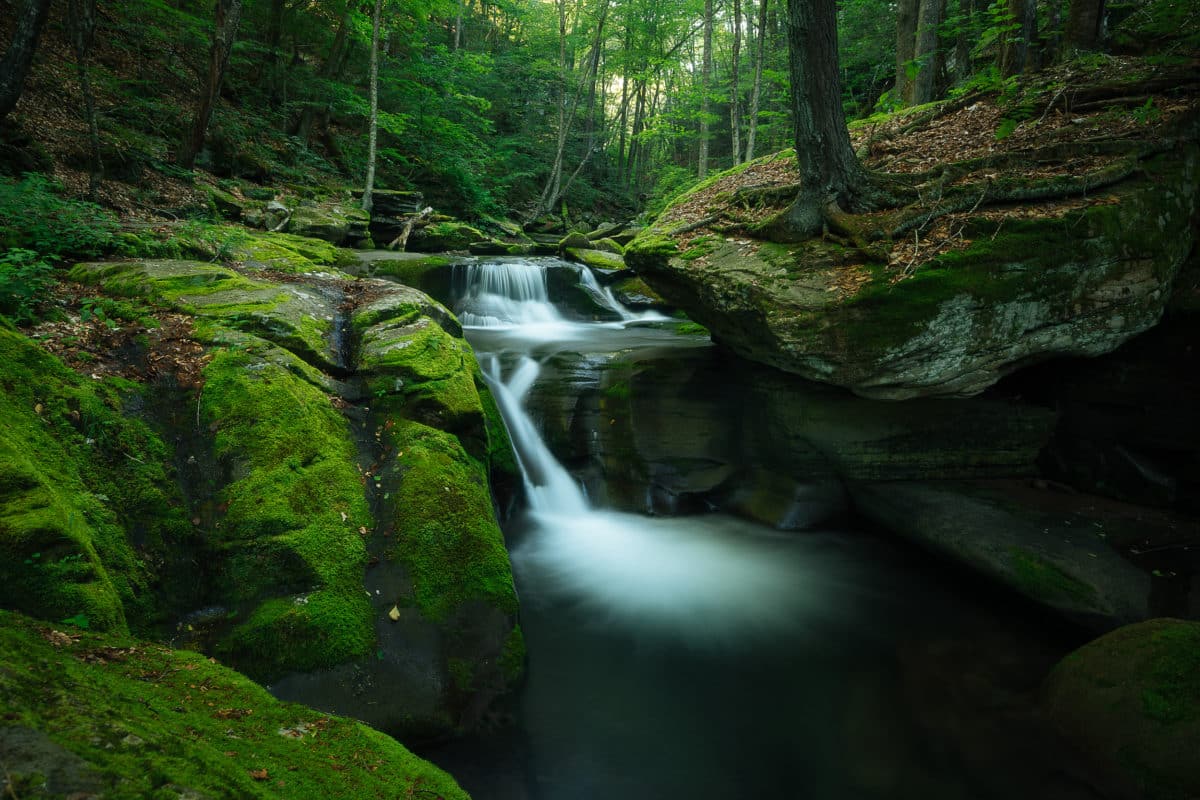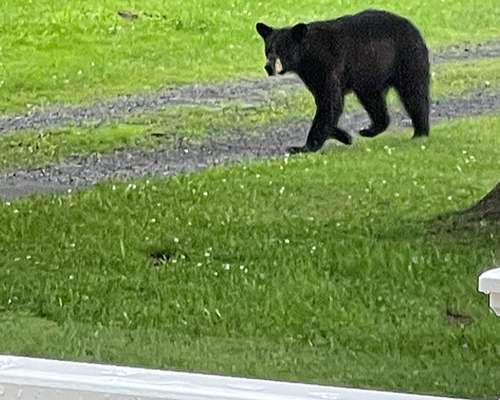“Whoever has made a voyage up the Hudson must remember the Kaatskill mountains. They are a dismembered branch of the great Appalachian family, and are seen away to the west of the river, swelling up to a noble height, and lording it over the surrounding country. Every change of season, every change of weather, indeed, every hour of the day produces some change in the magical hues and shapes of these mountains; and they are regarded by all the good wives, far and near, as perfect barometers. When the weather is fair and settled, they are clothed in blue and purple, and print their bold outlines on the clear evening sky; but sometimes, when the rest of the landscape is cloudless, they will gather a hood of gray vapors about their summits, which, in the last rays of the setting sun, will glow and light up like a crown of glory.“
– Washington Irving, “Rip van Winkle“
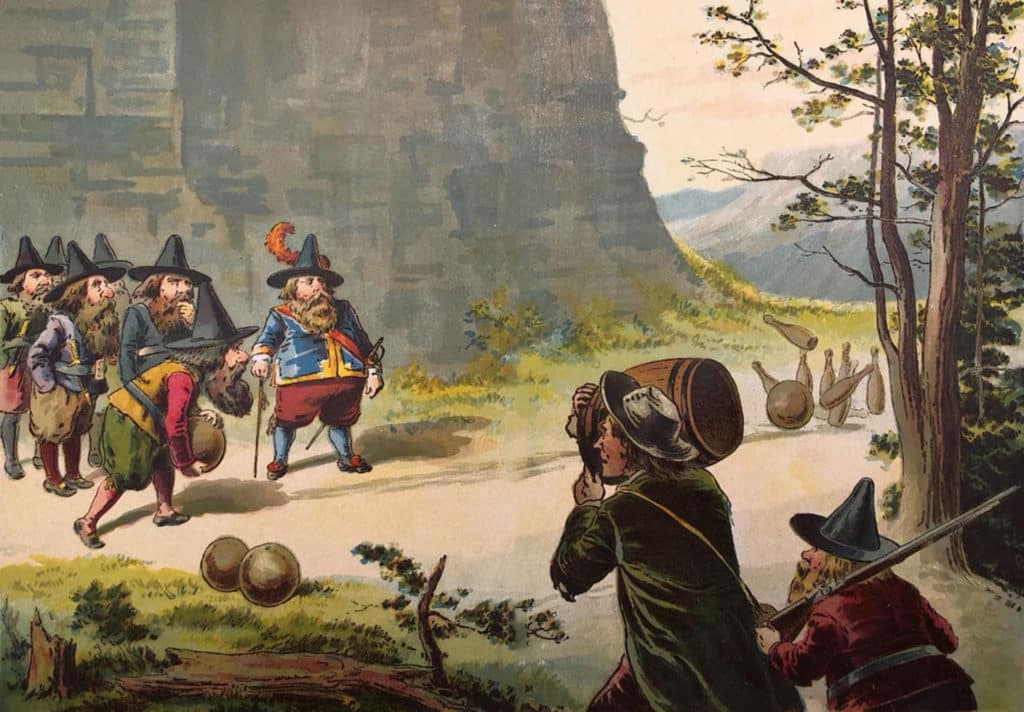
My very first memories were of those gentle giants called the Catskill Mountains. The rolling hills and valleys were everywhere, and while there were some heights of two or three thousand feet or more in parts of the range, they are not the sort of steep topography you might see in the Sierra Madre, Rockies or Cascades. Yet they are in their own way equally breathtaking.
The Master’s hand
Geologists believe the Catskill Mountains (from the Dutch Kaaterskill) were formed eons ago from sediment drained off the Arcadian mountain range, causing an immense plateau in central New York State which was eventually etched by running water. This erosion created the early contour of the Catskills, leaving the rolling mountain tops as the remains of the plateau. Thrusting and weathering over time have contributed to the process. On a foundation laid in the Devonian age, one finds sedimentary rock such as sandstone and metamorphic rock, most notably conglomerate.
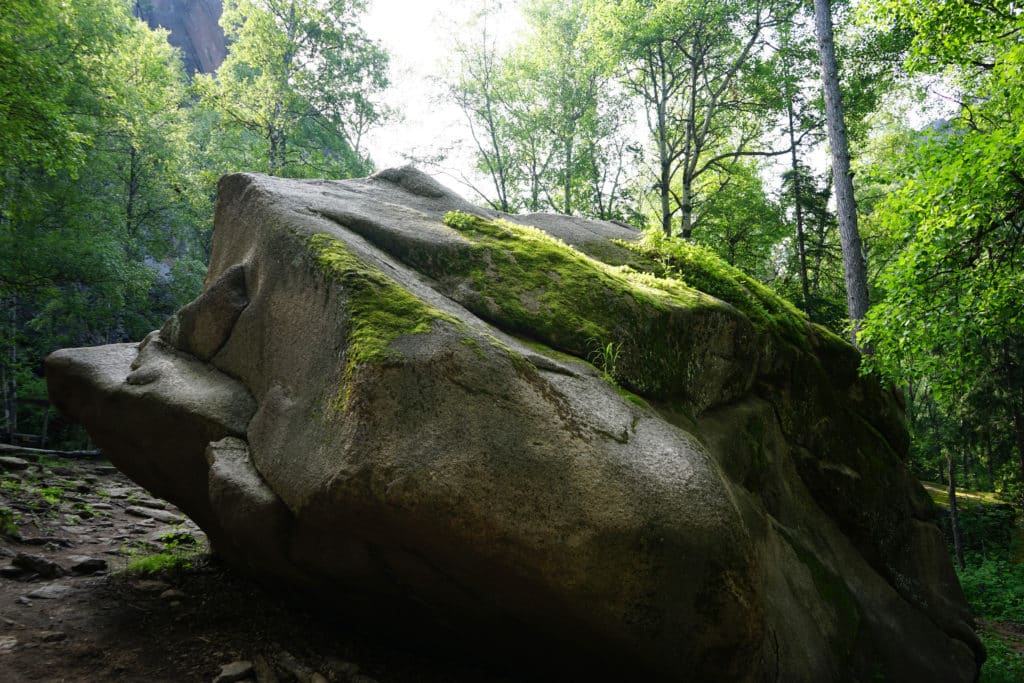
The Gentle giants of the Catskill Mountains
The last Pleistocene glacier covered almost every mountain in the Catskill Mountains. Remnants of the glaciation are everywhere. House-sized boulders which were carried hundreds of miles by the advance of the ice, were eventually abandoned in fields when the ice retreated to the frozen womb from which it emerged. For the last 12,000 or more years, they sat silently as detritus, dead leaves, moss, and fungi growing in the remains of rotted wood gave each rock a sense of delicate and unique character. Growing up, I loved these massive stones. These stones were not merely rocks to me, but pirate ships to be captained and forts to be defended from some dragon or other mortal foe. They were familiar friends where a child could go and bask in the sun, to reflect on the challenges of life. Sanctuaries. When you talked aloud to no one in particular, it was easy to believe that you were being heard. These earthly monuments were sentinels, guardians, even confidants like something out of a Steinbeck novel. I knew that no storm, no circumstance could amend them, at least in my lifetime. They had not changed fundamentally during the half century before I was born and the half century since I last saw them. They no doubt still remain. To me, they were strangely comforting, suggesting some of the virtues of God, Himself as described in the Bible; steadfastness, inviting, accepting, unchanging, immutable, ever present. It was here that I played as a child. It was these virtues that I learned.
Sullivan County
I lived on a resort in Sullivan County that my parents managed. Growing up, I had altogether several hundreds of acres of fields, forests and hills over which to roam at will, and I often did so. As with other counties in the Catskill Mountains (Ulster, Greene and Delaware), there were waterfalls, waterholes, creeks and rivers that I regularly visited, plus marshland where pitcher plants and wild calla grew. There was a lake walking distance from my home, brimming with pickerel, sunfish, catfish and blue-gills. Here I would I learn to fish, in a small boat drifing lazily among the water lillies, silent at 6:00 a.m. except for the calls of wild ducks and loons. Frogs and turtles (painted, box and snapper) were common.
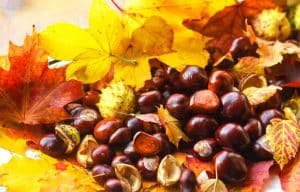
Game was as abundant year round in Sullivan County as it was in other Catskill Mountains counties, though in winter some mammals would hibernate. White-tail deer were as everyday as butterflies, and in summer we had monarch butterflies, yellow-swallowtails, and the common cabbage moth which by fall disappeared. Also bluebirds, hummingbirds, owls, red winged blackbirds and barn swallows. By the time school started in early September, the goldenrod had blossomed to the chagrin of those with allergies and the air was filled with milkweed seeds. Clusters of empty milkweed pods resembled cotton plants after the cotton had been removed. I loved to find cocoons, because of the wonder involved in transforming one lifeform into another. If you gently applied the slightest amount of pressure to the silky capsule so as not to injure the larva, you could feel movement inside. A validation that something miraculous and unseen was occurring.
Token economies
Fields of daisies, buttercups, black-eyed Susans, and thistles and groves of beechnut and butternut trees were scattered throughout the county. In the fall, the seeds of these trees provided my friends and me with a sort of token economy along the lines of baseball cards (e.g., one Sandy Koufax was worth five Marv Thornberries.) Chestnuts were the most prized, not just because of their size and beautiful appearance, but because of the law of supply and demand. There was a chestnut bight a century ago that killed off most of the chestnut trees in the area, so these fruits were valued more than other nuts. Beechnuts were also treasured because of their curious shape, and because you had to walk a long distance to find them. So, the opportunity cost involved in collecting them was higher. Butternuts were equally rare, but sticky, and they quickly lost favor. Then, there was the common acorn. We collected acorns by the sacksful, partly because they were also fed to the pigs, whose pen was thankfully several hundred yards away and downwind from the main house because the smell was intolerable, even to a child.
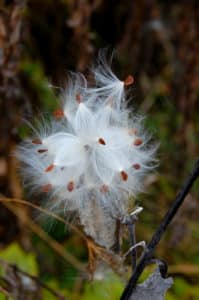
While we youngsters were collecting nuts, the men collected apples and took them down to a cider mill some miles away. I rode along once. The apples in the area may have been cultivated at some point, but as far as I could tell, they were mostly taken for granted. A gift from Johnny Appleseed, perhaps. The cider mill looked something like a deer camp, but the men seemed more scruffy than the hunters and farmers I typically saw. Some worked loading or unloading pickup trucks and others just sat about with a glass or jug. We dropped off our apples and received “sweet cider” with the offer of “hard cider” in kind.
We had out own folk hero in my neck of the Catskills: Johnny Caesar Cicero Darling. We learned how he could jump halfway across a pond and back again to the shore without getting wet. New York state as a whole had many colorful characters. This was part of our grade school curricula. Eventually Johnny Darling joined that pantheon of American folk heroes featuring the likes of Paul Bunyon and his blue ox Babe, and John Henry, the “steel driving man.” Not exactly Camelot, but then, again, heroes are heroes.
Preparing for snow in the Catskill Mountains
Fall marked the end of summer, and we would cut and bale into bundles entires acres of corn which would be diced up and blown into the barn’s silo along with a succulent type of grass called millard. Around this time, we plowed up three or four acres of potatoes for our guests in the coming year. In late fall, we’d put up our snow fences. Each fence was 100 feet or more in length and about five feet in heigth. It was not a pleasant task, because the staves were the roughest grade of unfinished of wood available, and you could not avoid getting painful splinters in your hands whether you wore gloves or not. But these fences, placed in strategic locations, kept snow from drifting against exterior doorways, walkways, and so on. During the hunting season, I would shoot squirrels or rabbits, but I quickly lost interest in that. Killing an animal gave me a rush, but I soon decided that it was not worth taking the life of some noble or innocent creature when we had more than enough to eat as it was. Fall also marked the end of the guest season, and with the exception of Holiday visitors and parties, the resort was deserted.
Winter invariably followed fall. Sullivan County where I grew uo got just over five feet of snow per year, well more than twice the national average. My outdoor activities were curtailed in winter, partly because snow drifts were much taller than I and also because regardless of the socks or boots that I wore, I could never quite keep my feet warm. When I did go out, I would follow rabbit tacks in the snow, curious to see where they led. Mostly, however, I played with friends, and we went sledding, slipping and slidding on frozen ponds.
There were often problems for deer in winter. Sometimes after a foot or more of snow covered the ground, the sun would melt the top quarter inch of the snow, even with the temperature below freezing, forming a crust of ice thick enough to support a dog, but on which deer could not be supported, so they had to awkwardly and slowly walk with their leg breaking through the crust with every step. Under these circumstances, deer might be chased by three or most dogs who could run or slide on the snow and easily catch–and attack–the deer.
The Delaware River was only a dozen miles away, and it would freeze with ice easily a foot thick. In early Spring, men would bet among themselves when the “ice would break” on the river. The actual date would be announced by a roar, often in the middle of the night, when huge blocks of ice were thrown onto the river shore. The river where I lived seemed as ancient as the mountains. It drifted lazily southward and somewhat easterly down to Delaware Bay and eventually the ocean. The river bottom had fist-sized rounded stones on which we difficult to wade, and you could walk across the river where it passed nearby.
Winters end
I always eagerly anticipated Spring. The snow would recede, and one of the first heralds besides the robin would be the pussy willow bush, with its fur-like blossoms. Other bushes, shrubs and trees would push out shoots and buds as the whole of the Catskill Mountains would take on an entirely different aspect.
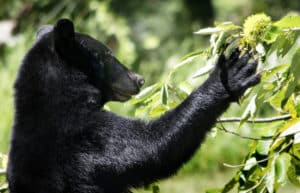
In late Spring and during the summer, our collie would invariably encounter a pocupine or a skunk, generally in the middle of the night. We also had problems with black bears. They would climb in the garbage cans outside the resorts kitchen and you could hear the commotion from the asphalt access road: cans, garbage and bears. Bears also frequented the berry patches, so you always had to be careful in large blueberry patches (and I knew where each of them were.) Bears also feasted on raspberries, blackberries, currants, and other plants, even bugs (and bears were not afraid to tangle with honeybees for the sake of raiding a hive for honey.) Their thick fur helped protect them from the angry bees. Spring and summer rain showers would populate the back roads with red newts, which I enthusiastically collected.
During the summer when I was not baling hay, I was at the lake (Lake Huntington) or at a waterhole with a six foot waterfall. The localtion of this piece of paradise was supposed to be a secret, but often we saw strangers sunning themselves on the rocks of “our” waterhole. The nerve! There was a five foot rock we would jump off, and you could walk behind the falls if you had the courage. We would also let the current carry us downstream. The current wasn’t too rapid and most of the rocks were covered with algae or moss so there was little chance of injury or drowning. My friends and I had names for the features at the falls and the creek below.
Then and now in the Catskill Mountains
When people think of the Catskill Mountains, they think of famous resorts such as Grossingers, Browns, Kutchers, the Concord, and many others. These hotels, now mostly shuttered, were venues where the best comedians on stage could make you laugh and the best musicians the country had to offer could entertain. Prize fighters would camp out in one hotel or another to train for their next bout. But cheap airline fares to places in the Caribbean and changing consumer preferences have caused these monuments, including the one I lived at, to fall into ruin.
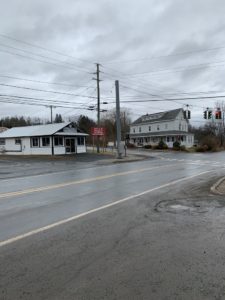
My wife wanted to see where I grew up. I showed her my old school in Jeffersonville, and what used to be Fosterdale, the town I lived in (which was actually an intersection between two state roads.) We drove to one of the entrances of the Recreation Farm where I lived, serving a mostly European Jewish community. It began as a convalescent home for people stricken with tuberculosis in the early twentieth century. Slowly it grew, but the median age of our guests remained high, which meant a younger generation had no appreciation or even knowledge of the facility, and it was just a matter of time before it, too fell into disrepair. Now, after having lived there for fifteen years, and as I made sense to her of the ruins we stared at, I realize I’m probably one of the surviving “experts” on what the Recreation Farm was about, but I realize how little I actually know.
After fifty years living in almost half a dozen states, I still missed the Catskill Mountains. Like a salmon, I felt an instinctive “pull” to return here for the last chapter of my life. When my wife died, I struggled over what door to open next. I met and shortly after married a wonderful woman from upstate New York who was living in Texas and found myself at the threshold of an amazing opportunity that took me back north, back home. To the Catskills, the mountains that were calling me like in the lyrics in the song Mountain Sound (“I heard them calling in the distance,
So I packed my things and ran”) by Monsters and Men.
Since I’ve come home to the Catskills, I’ve traveled through Greene and Ulster counties for the first time of my life. We had a picnic just a few feet from where Henry Hudson moored his ship “The Half Moon” before deciding to return home. I’ve been to Palenville, home of Rip Van Winkle when my Deena and I considered purchasing a house built in 1802 that we thought might be a good bed and breakfast. We’ve also gone to the towns of Woodstock, Catskill and Hudson just to mention a few places. We had our wedding reception in Kingston, which was briefly the capital of New York state during the Revolutionary War when the colonials were afraid that the British would burn down Albany.
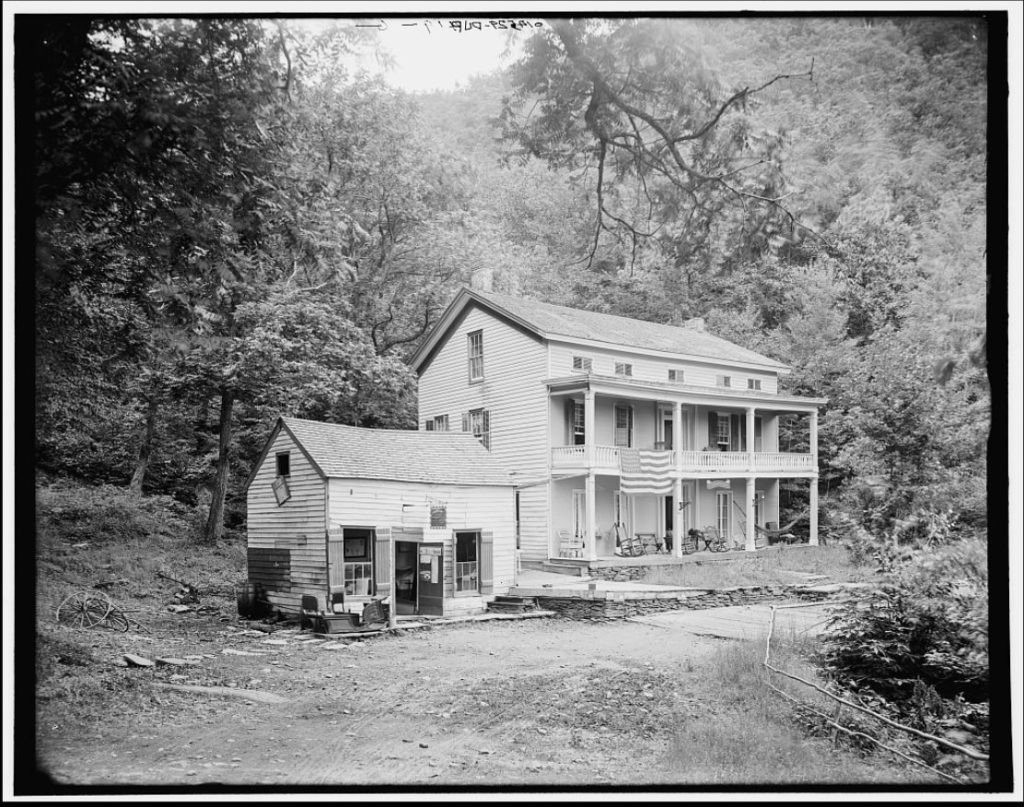
A work in progress
Like the Catskill Mountains, themselves, this post will likely be a work in progress. There are many places Deena and I want to visit and revisit: Covered bridges, waterfalls, abandoned mills, historical landmarks and so on. Even Molly seems interested in road trips where she can explore new sights and smells. I hope my readers enjoy these installments as much as I enjoy visiting them and writing about them.
